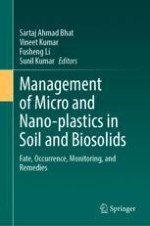2024 | OriginalPaper | Buchkapitel
Occurrence and Fate of Microplastics in Anaerobic Digestion of Dewatered Sludge
verfasst von : Kuok Ho Daniel Tang
Erschienen in: Management of Micro and Nano-plastics in Soil and Biosolids
Verlag: Springer Nature Switzerland
Aktivieren Sie unsere intelligente Suche, um passende Fachinhalte oder Patente zu finden.
Wählen Sie Textabschnitte aus um mit Künstlicher Intelligenz passenden Patente zu finden. powered by
Markieren Sie Textabschnitte, um KI-gestützt weitere passende Inhalte zu finden. powered by
